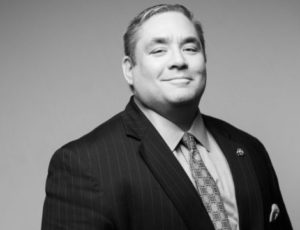Diving Into COVID-19 Relief Programs for Endodontists
 Intro/Disclaimer:
Intro/Disclaimer:
The AAE recently interviewed Brian Bernardoni, managing partner, Aurelius Public Affairs, on COVID-19 relief programs for endodontists. Bernardoni is an experienced lobbyist, moderator, media spokesperson and association executive who has worked in the past with Chicago’s association leadership and volunteers to advocate, defeat, assess and monitor legislation impacting the entire Chicagoland business community and industry, as well as lobby and provide legislative strategies for the business community and its economic development efforts. He has also presented webinars on SBA loans and other programs available to small business owners.
The information shared in this interview is meant to inform members of programs that may be available to aid their practices during the COVID-19 pandemic. Ultimately, it is incumbent on members to consult with their individual accountants, attorneys and other professionals.
AAE: It seems dental practices may qualify for some forms of relief under the recently enacted legislation – specifically Economic Injury Disaster Loans (EIDL) and Paycheck Protection Program (PPP) loans managed by the Small Business Administration (SBA). What is an EIDL and the PPP?
Bernardoni: Endodontic dental practices may qualify for some form of relief under the newly enacted legislation. EIDLs are advances that may provide up to $10,000 of economic relief to businesses that are currently experiencing temporary difficulties. PPPs are loans meant to help businesses keep their workforce employed during the COVID-19 Pandemic.
The grant associated with the EDIL makes it possible for any business that meets the minimum requirements to apply, able to receive up to $10,000 almost immediately (the SBA is shooting for three days) that they can use the funds without the requirement to repay the loan. The PPP are not immediately available.
AAE: How does an endodontist qualify or apply for one? Similarly, can they apply for both?
Bernardoni: An endodontist may qualify for both programs, but in order to see if they are eligible, they should first talk to their banker, accountant and/or lawyer. The application process is through an online portal managed by the SBA. The online portal asks the applicants a series of questions to determine eligibility. Depending on the user’s current economic conditions or answers – the application process continues. To learn more about the application process or to apply, endodontists are encouraged to visit www.SBA.gov. They can also be reached by phone at 800-659-2955 or email at disastercustomerservice@sba.gov.
AAE: There seem to be a lot of banks promoting different programs. Where are the appropriate applications?
Bernardoni: Banks service and manage SBA loans, but it is important for endodontists to consult with their personal banker, accountant and/or lawyer before choosing which bank or program to choose.
AAE: What information does an endodontist or other small business owner need to provide when applying?
Bernardoni: Applicants should have bank statements dating back to at least October 2019. They must have their recent tax returns, other relevant payroll information and 2020 year to date profit and loss statements. For PPP, they should also have: Their payroll costs, including employee salary, wages and commissions, payment of tips, payments for vacation, parental, family, and sick leave, etc. These costs may also include the costs of group health benefits (including insurance premiums), payment of retirement benefits, payment of state and local tax assessment on employee compensation, an income for a sole proprietor or independent contractor not in excess of $100,000. They should also be able to provide utility expenses, defined as electricity, gas, water, transportation, and telephone or internet access for service that began before February 15, 2020.
AAE: What can an endodontist use the funds for? Or put a different way, what can’t the funds be used for?
Bernardoni: Congressional action on this subject continues to be fluid and their proposals may affect industries differently. Endodontists should consult with their personal accountant, lawyer or banker to determine how the funds can be used.
AAE: Will everyone who may be qualified for assistance receive it?
Bernardoni: Unfortunately, not everyone who qualifies may receive support.
AAE: How long does it the approval process typically take and how long does it take for funds to be distributed?
Bernardoni: The online application processes usually take 2-4 hours. While the website says it can take 2-4 weeks for funds to be dispersed, recent reports indicate it can be longer. The PPP may take longer as they’re not directly managed by the SBA.
AAE: How are these considered grants, and how are these considered loans?
Bernardoni: The EDIL is considered a government grant and doesn’t need to be paid back. The PPP is considered a loan and does need to be paid back.
AAE: What are the interest rates associated with these sorts of loans?
Bernardoni: For small businesses, they’re 3.75%
AAE: What is the maximum/minimum you can borrow?
Bernardoni: Applicants can apply for up to $2 million for the PPP and $10,000 for the EDIL.
The amounts an applicant applies for should be discussed between the applicant and their respective consul.
AAE: How long do you have to pay it back, and do you have to pay it back?
Bernardoni: Terms of the loan are dependent on the amount and loan servicer.
What is the difference between laying off and furloughing employees?
Bernardoni: Generally, furlough means a suspension of work for a short period of time and they remain on an employer’s books. They are unpaid, but the worker returns to work.
AAE: Is there any additional advice you’d like to give endodontists?
Bernardoni: The process may take longer than usual due to the influx in use but be patient and definitely apply! The guidelines from SBA may change but apply. Having been an executive director for an association myself, I understand how important this sort of relief can be for members. And, now more than ever, we must turn to our colleagues and Associations for support. Please know, that we are all in this together.




